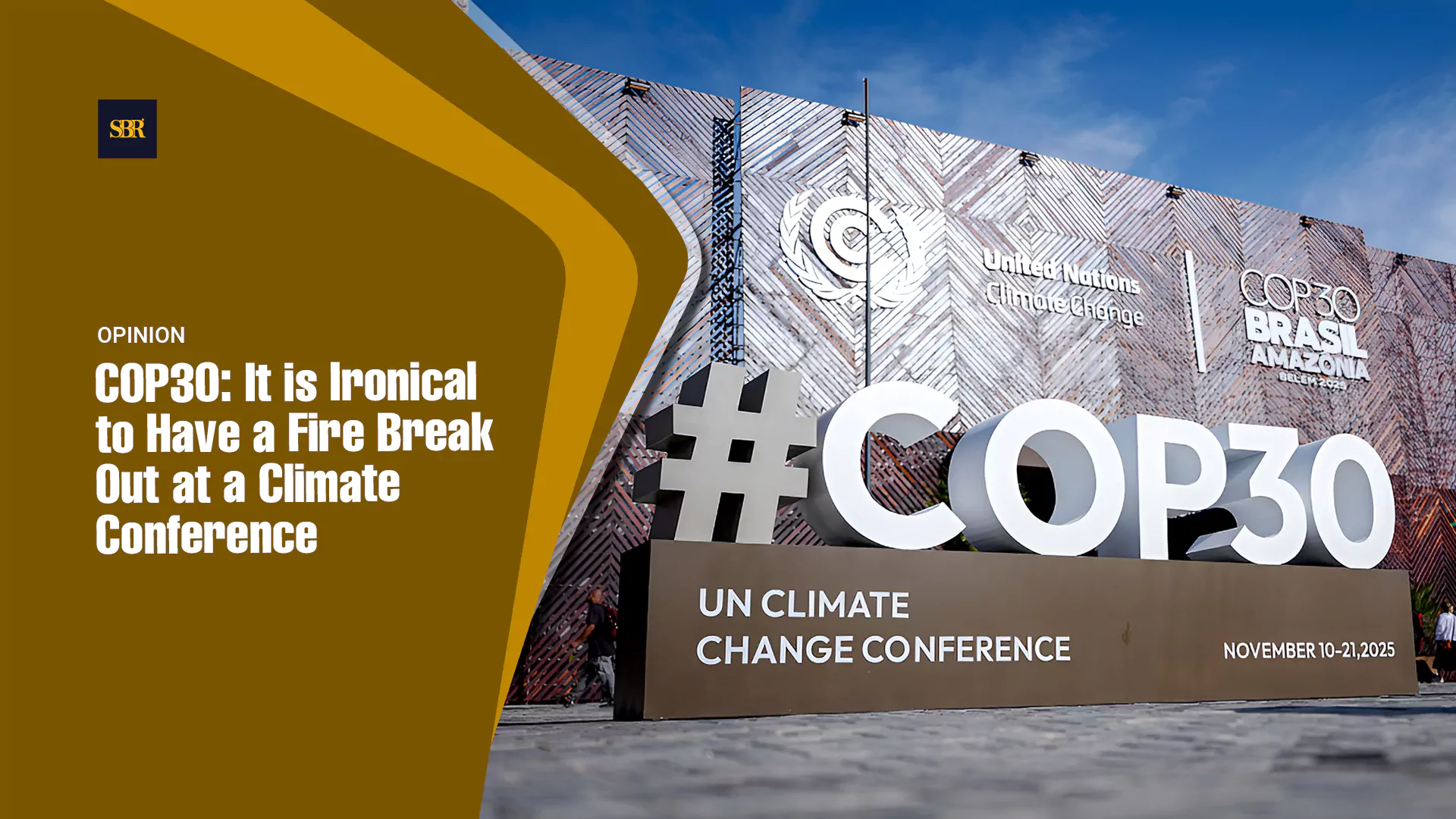COP30: It is Ironical to Have a Fire Break Out at a Climate Conference
The blaze at COP30 says more about our global climate response than any speech delivered inside the venue.

(Photo: SBR)
BELEM, Brazil, Nov. 21, 2025 — A fire forcing the evacuation of COP30 in Belém offered the kind of symbolism no commentator could have imagined. Delegates from nearly 190 nations had gathered to discuss planetary heating and resilience, yet the venue meant to demonstrate safety and preparedness quickly filled with smoke as pavilions were cleared. Reports indicated that 21 people suffered smoke inhalation and that the affected area included structures still under construction, with workers citing rushed schedules and exposed beams. The scene mirrored the very chaos global leaders claim they are prepared to prevent. When the world convenes to confront disaster and ends up fleeing a burning hall, the message speaks for itself.
The episode was more than a moment of awkwardness. It highlighted a deeper contradiction within the climate process. COP30 is built on grand promises and elaborate staging, with venues meant to inspire confidence and showcase global cooperation. Yet the fire revealed a starkly different reality. It exposed gaps in planning and risk assessment, along with a mindset that sometimes places appearance above preparedness. For a conference devoted to warning the world about cascading dangers, this lapse sent a discordant message that no communiqué could easily erase.
What Actually Happened
According to multiple reports the fire is believed to have started in the pavilion zone, potentially due to overloaded equipment or a malfunctioning appliance. Some parts of the site were not fully completed even as negotiations were underway. Workers on the ground described ongoing fixes and adjustments while delegates walked through spaces still being finished. The fire spread quickly enough to trigger immediate evacuation and prompted a temporary shutdown of the affected area. Thirteen people required medical attention, though fortunately no one suffered life-threatening injuries.
This is not about assigning blame to a single staffer or a single machine. The point is bigger. If you host the world’s largest climate summit in a venue that is not fully ready, you invite the kind of irony that undercuts your mission. A summit that warns about worsening wildfires becomes the site of a fire. A conference that calls for building resilient infrastructure must explain why its own physical space failed a basic stress test.
Does the Incident Widen the Credibility Gap?
The immediate reaction from many attendees was disbelief mixed with discomfort. When evacuation alarms ring during a global climate meeting you do not just lose time on negotiations. You lose gravity. People begin to question whether the systems meant to guide the world toward safety can even safeguard their own gathering.
The credibility of climate diplomacy rests in part on the ability to model competence. At a moment when climate scepticism remains loud and fossil fuel interests stay entrenched, any sign of mismanagement at a summit becomes ammunition for those who insist the process is flawed or superficial. A fire offers a dramatic contrast between rhetoric and execution. This is not fair to the many experts and activists dedicating their lives to climate solutions, but perception matters. If the summit looks disorganised, the message looks weaker.
The Deeper Split
Construction Still Underway: Holding meetings in areas that are unfinished signals hurried preparation and corners cut. It creates real physical risk and metaphorical risk. Climate leadership cannot appear improvised.
Symbolism Over Substance: COP conferences are known for grand visual statements. Yet when presentation outweighs safety, symbolism collapses into spectacle.
What Should the Fire Teach Us?
The blaze at COP30 should become a turning point. It reminds policymakers that climate action is not a performance. It is practical work. It requires serious planning, solid infrastructure, and an understanding that the threats we face are not theoretical. When a climate venue burns it collapses the distance between the conversation and the crisis. It tells us that the world has spent too much time decorating stages and not enough time reinforcing systems.
This does not mean the summit loses all meaning. If anything, it gives delegates a sharper mandate. Talks must shift from aspirational language to real commitments. Funding for adaptation in vulnerable countries cannot keep stalling. Plans for emissions cuts must be credible instead of convenient. And the logistics of hosting future COPs must reflect the urgency they preach. A safe venue should be the minimum benchmark, not a luxury.
The fire is an embarrassment, but it is also an opportunity. It is a reminder that we do not have the luxury of complacency. Climate change is already accelerating disasters across continents. The world cannot afford to host climate conferences in spaces that mirror the fragility we are trying to fix.
A fire breaking out at a climate summit feels almost too on the nose. Yet it may be the uncomfortable image that forces governments to confront how shallow their commitments can appear when not backed by solid groundwork. The planet is warming. The stakes are rising. And the smoke that filled a conference hall in Brazil should clear any doubt that the gap between talk and action remains far too wide.
A fire at a climate summit exposes the wide gap between the warnings leaders issue and the preparedness they demonstrate.
Inputs from Diana Chou
Editing by David Ryder





